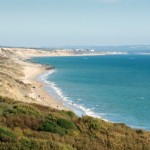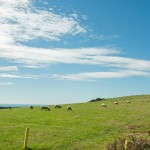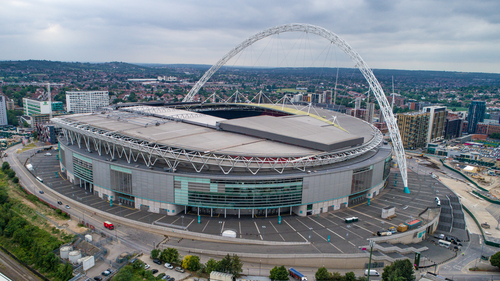
The London Borough of Brent is situated in the northwest of outer London. It was formed in 1965 from the merger of the former Municipal Boroughs of Wembley and Willesden, deriving its name from the River Brent, which runs more or less through the borough. Brent borders the boroughs of Harrow to the north-west, Barnet to the north-east, Camden to the east, Westminster to the south-east, and Kensington and Chelsea, Hammersmith and Fulham, and Ealing to the south. Major districts of Brent include Kilburn, Neasden, Willesden and Wembley. The Borough of Brent is arguably most renowned for being home to England’s national football arena, Wembley Stadium. The Borough has an area of 44 sq. km and at the time of the 2011 UK Census, had a population of 311,215.
A Very Brief History
There has been a settlement in the Borough of Brent area since prehistoric times. The name Brent is derived from the name of the Celtic goddess Brigantia, which pre-dates Roman times. However, the Romans were certainly active in the area as they paved the ancient road of Watling Street between London and Dover, which today forms the eastern boundary of the borough. When the Romans left Britain in the early 5th century the Saxons began to settle in the area. As a result, many of the place-names in Brent are of Anglo-Saxon origin. For instance, Wemba Lea translates as “Wemba’s Clearing” or “Wemba’s Wood” and the origin of the name Wembley. These settlements inevitably started out as nothing more than small hutted communities in forest clearings.
In 1134, Kilburn Priory was established, which became a regular stopping-off place for travellers and pilgrims, alike. By the 15th century, inns were being built along Edgware Road, which had now superseded the old Roman road of Watling Street, to serve the growing number of travellers.
By 1801, the Borough of Brent was still little more than a collection of villages and farms surrounded by fields and woods, with a total population of only 2,022. The population rose relatively slowly throughout the early 19th century, reaching only 5,646 by the middle of the century. The arrival of the railway within the borough in the mid-19th century, coupled with London’s ever-increasing need for new housing, saw the rate of population growth intensify.
In the preceding 50 years to the turn of the 20th century, the population had increased by almost 20 fold. The Wembley area developed rapidly between World Wars I and II, mainly as a residential area but there was also a small amount of industrial development. Conversely, Willesden which had largely been a middle-class residential suburb was transformed to a predominantly working-class part of London’s industrial belt during World War I, when munitions factories were established in the area. The change stimulated industrial growth throughout the area, both in established centres like Church End and Kilburn and in new areas like Cricklewood and Park Royal.
Wembley Wembley
In 1923, the new Wembley Stadium opened to host the FA Cup Final for the first time. It was also used for the British Empire Exhibition (1924–25) as well as the 1948 Summer Olympic Games. It became the full-time home venue for England’s international football matches from 1951 onwards. It has also hosted many other important sporting events both in the British and International calendar, along with significant music concerts. In 2002, the old Wembley stadium was completely demolished but was replaced by a new 90,000-seat venue that re-opened 5 years later.
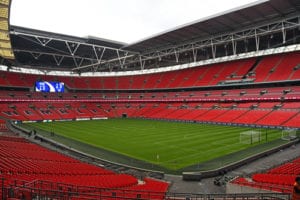
The ‘new’ Wembley Stadium opened in 2007
Today, Brent has one of the most ethnically diverse populations in the country, with large Asian, Black African, Black Caribbean, Irish and Eastern European communities. In the 2011 census, those who identified as White British made up 18% of the borough’s population. About 18% identified as other White, while 5% were of mixed heritage, 33% of South Asian heritage and 19% were of African or Caribbean heritage, leaving 7% being from other ethnic groups. Open spaces in the borough include Roundwood, Gladstone, and Fryent Country parks. The Welsh Harp Reservoir, which was constructed in the 1830s to supply water to the Grand Junction Canal, is now used for sailing and is a mecca for many species of migratory wildfowl.
Brent is twinned with the County of South Dublin and Leinster in the Republic of Ireland.
Getting around!
Generally, it’s quicker and cheaper to take public transport rather than drive around London, as you may be liable for additional charges such as bridge tolls, congestion tax, etc. For bus travel, you will need a valid travel card such as the Oyster Card. Bus travel can work out cheaper than other forms of transport if you intend to do a lot of travelling around.
Brent Train Stations
There are lots of train stations situated around the Borough of Brent. London Underground, London Overground and National Rail stations in the borough are:
Underground (tube) Stations
- Alperton
- Dollis Hill
- Kilburn
- Kilburn Park
- Kingsbury
- Neasden
- Northwick Park
- Preston Road
- Queensbury
- Sudbury Town
- Wembley Park
- Willesden Green
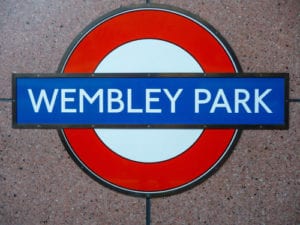
Wembley Park is an Underground Station in Brent
Overground Stations
- Harlesden
- Kensal Green
- Kenton
- North Wembley
- Queen’s Park
- South Kenton
- Stonebridge Park
National Railway Stations
- Brondesbury
- Brondesbury Park
- Sudbury & Harrow Road
- Wembley Stadium
Things to see and do!
Places
- Ace Café – a retro transport café situated on the A406 (the north circular road) that regularly hosts car and motorcycle club meet-ups and events
- Lexi Cinema – shows independent films and hosts cultural events, also has a performance space and art gallery. It supports the Sustainability Institute
- Queens Park Farmers Market – is a local Sunday market selling locally grown and hand-reared food produce
- SSE (Wembley) Arena – the world-famous music and concert venue
- Welsh Harp Nature Reserve and Reservoir – a reserve that attracts a great variety of wildlife, also popular for water sports, biking and walking
- BAPS Shri Swaminarayan Mandir – (aka Neasden Temple) built using traditional materials is seen as Europe’s first authentic Hindu temple
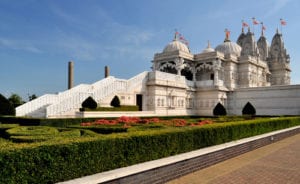
Shri Swaminarayan Mandir – first genuine Hindu temple in Europe
Landmarks
- Wembley Stadium
- Jubilee clock Harlesden
- Brent Civic Centre
Parks and open spaces
- Roe Green Park
- Mapesbury Dell
- Queen’s Park
- Roundwood Park
- Tiverton Green
- Gladstone Park
- Barham Park
- One Tree Hill Park
- Maybank Open Space
- King Edward VI Park
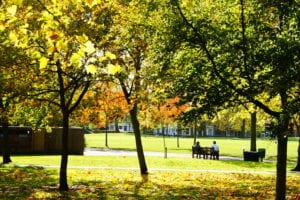
Queen’s Park – one of the many open spaces in Borough of Brent
Where to stay In Brent
There are a few hostels in Brent, that either offer shared facilities or are dormitory accommodation. However, there’s plenty of B & B/Guesthouse/Basic Hotels style accommodation on offer. If you’re looking for a bit more luxury then there’s also plenty 3, 4 and 5-star hotel-style accommodation on offer. Accommodation costs are generally quite favourable when compared to most of the rest of London. An alternative to a hotel would be to rent an apartment – most have no minimum let period. While the majority of apartments cater to couples, some can accommodate up to 6 people. Indicative prices for the most readily available types of accommodation/per night, based on 2 adults sharing, unless otherwise indicated, are as follows:
Hostel: £20 – £45 (1 or 2 people)
B & B/Guesthouse/Basic Hotel: £45 – £100
3/4/5 Star Hotel: £100 – £250
Apartments vary greatly based on no. of available berths, location and standard



